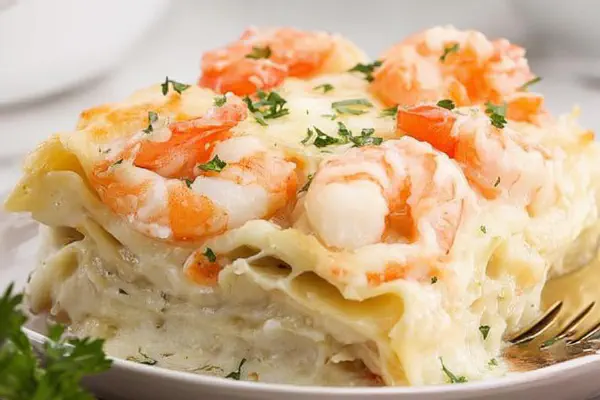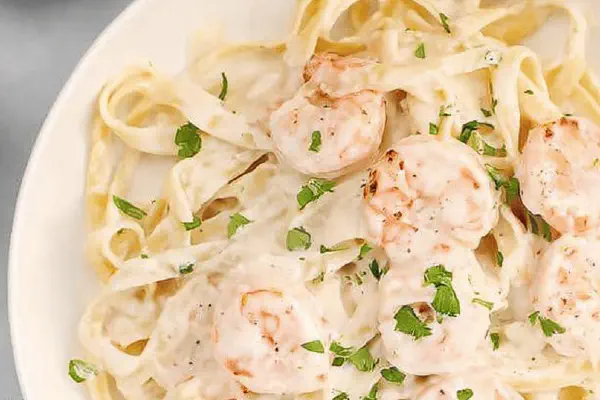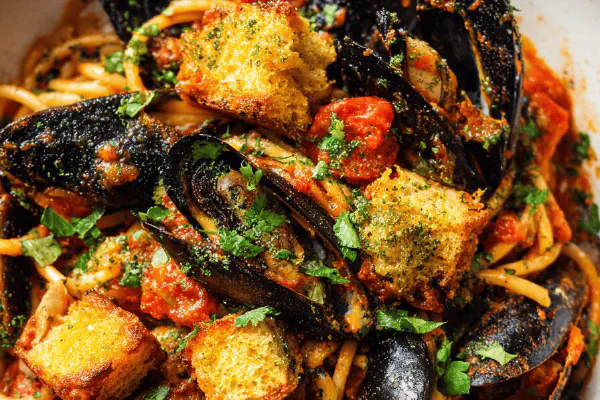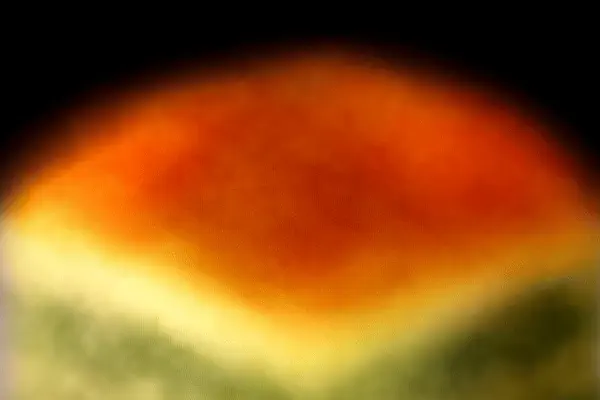Featured Recipe
Farfalle with Salmon and Veggies
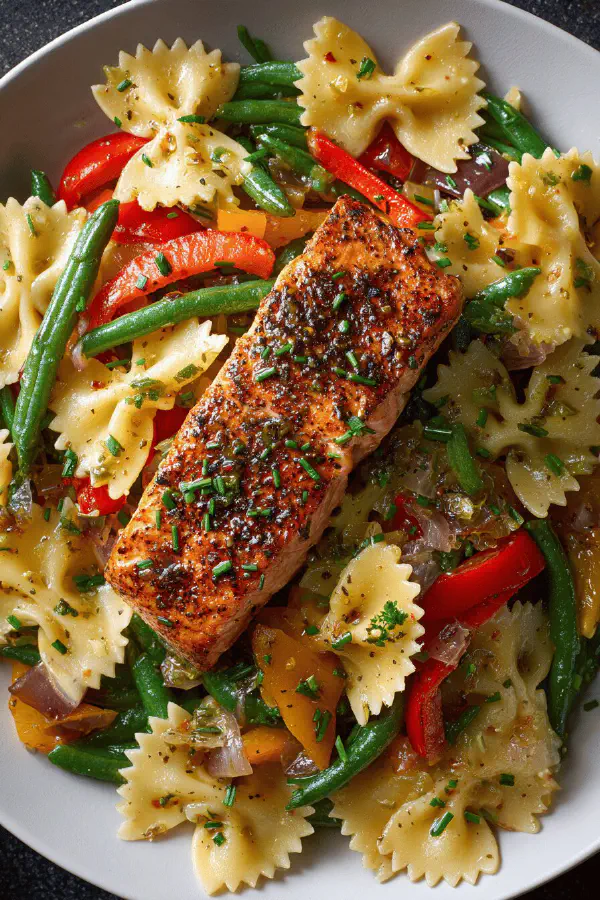
By Kate
"
A vibrant farfalle dish with seared salmon, tender green beans replacing asparagus, and sweet bell peppers swapped in for tomatoes. Sautéed onions and garlic form the base, enhanced by tangy red wine vinegar and herbes de Provence. Dijon mustard and fresh chives round out the flavors. Cook pasta al dente, grill salmon skinless for a crisp exterior, tender interior. Visual cues guide timing rather than strict clocks, ensuring peak texture and flavor. Vegan olive oil substitutes and simple seasoning make it flexible. Practical swaps, seasoning layering, and balancing acid and fat for taste and texture.
"
Prep:
30 min
Cook:
25 min
Total:
55 min
Serves:
6 servings
pasta
seafood
vegetables
French-inspired
Introduction
Farfalle pasta tossed with salmon and crisp vegetables, layered with sharp mustard and herbal tang. Not your typical 5-ingredient pasta. It involves knowledge of when onions have that deep caramelized aroma without burning, how to tell salmon is just done under a broiler, and cooking farfalle to just the right chewiness. Green beans take the place of asparagus, bell peppers substitute for juicy tomatoes, shifting texture and flavor. An acid hit from red wine vinegar instead of balsamic cuts through the richness. Timing is fluid. Visual cues over clocks. Flakes of salmon resting warm ready to be folded into pasta spells ease with a touch of precision. This is for cooks who know when to pause and who relish the interplay of textures but don’t want fussiness. The herbes de Provence adds a rustic French note, mustard deepens the profile. Not vegetarian — but flexible. Can swap salmon with firm tofu or smoked tempeh to hold texture. Technique and timing trump rigid instructions.
Ingredients
About the ingredients
Onions and garlic form a caramelized flavor base — take your time here. Don’t rush, or they’ll bitter. Use extra virgin olive oil for richness and silky coating. The salmon filet should be skinless for even cooking and easy flaking. For vegetables, green beans are a crunchier, more reliable substitute for asparagus which can overcook quickly under broiler; bell peppers lend sweetness not found with raw tomatoes. Red wine vinegar is sharper than balsamic but less sweet, balancing mustard’s punch. Herbes de Provence adds aromatic complexity without overpowering. Fresh chives at the end add brightness and color. When swapping ingredients, maintain balance between acidity, fat, and texture — critical for layered mouthfeel. Common kitchen trick: if you lack a broiler, a hot grill pan or oven at max roast temp can substitute, turning salmon frequently.
Method
Technique Tips
Start by cooking onions and garlic slowly to coax out sugars and depth — listen for gentle sizzling, avoid sharp crackles which mean burning. Broil salmon and green beans close to heat for rapid caramelization; watch visual signs carefully: salmon should firm but spring back on gentle press. Green beans should remain tender crisp — a flick of color from bright green to slightly blistered edges signals doneness. Pasta cooking depends on feel: bite into a piece as it nears the end of suggested time; little resistance means overcooked. Sauce brings acidity from red wine vinegar and pungency from mustard — helps break richness and meld flavors. Add pasta while sauce is warm but not hot to prevent clumping. Incorporate diced bell peppers at this stage for fresh pops of sweetness. Flake salmon gently to preserve large pieces — breaking prematurely creates fish dust, losing texture. Garnish with fresh chives last; intense heat dulls their aroma and color. If sauce feels dry, reserved pasta water is your best ally — adds silkiness without thinning flavor. Practical: this dish can be made ahead by cooking components separately; reheat gently in sauce to avoid overcooking fish or vegetables.
Chef's Notes
- 💡 Caramelize onions. Patience required. Low to medium heat. Stir frequently. Listen for that gentle sizzle. Aroma deepens when onions become sweet. Avoid burning. Use enough oil. Skip rushing. They'll bitter if overheated. Feel for that soft yet resilient texture.
- 💡 When broiling salmon, placement matters. Rack 4 inches from the heat source. Watch closely. Salmon edges should brown slightly. Should feel firm but still moist when pressed. Green beans need attention too. Should stay bright green; turn halfway.
- 💡 Pasta cooking time isn’t strict. Start checking early. That slight resistance is ideal. Ideal timing varies by brand. Drain and hold some pasta water back. Helps adjust sauce consistency if it looks dry later.
- 💡 Red wine vinegar adds brightness. It cuts through richness. Less sweet than balsamic. Use it to balance heavy flavors. Ditch unneeded acidity. Mustard also plays a role. Adds sharpness. Adjust per your tolerance for pungency.
- 💡 Chives at the end brighten the dish. Their flavor can fade with heat. Add them last to preserve pop of color. If you don’t have chives, fresh parsley works too. Adjust flavor balance by considering substitutes carefully.
Kitchen Wisdom
What can I substitute for salmon?
Firm tofu works well. Holds texture nicely. Smoked tempeh adds another dimension. Both options absorb flavors well.
How do I prevent overcooking the salmon?
Pull it when it feels firm but gives slightly. Keep it warm wrapped in foil. Timing dependent on thickness.
What if my pasta clumps together?
Stir immediately after cooking. Drizzle with oil. Or save a bit of cooking water to loosen it up. Helps retain creaminess in the sauce.
Can I make this ahead of time?
Yes, prep components separately. Reheat gently in sauce. Avoid reheating fish too much. Doesn't fare well with high heat.
